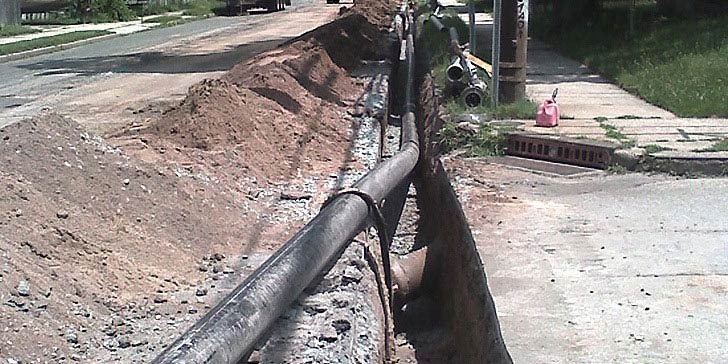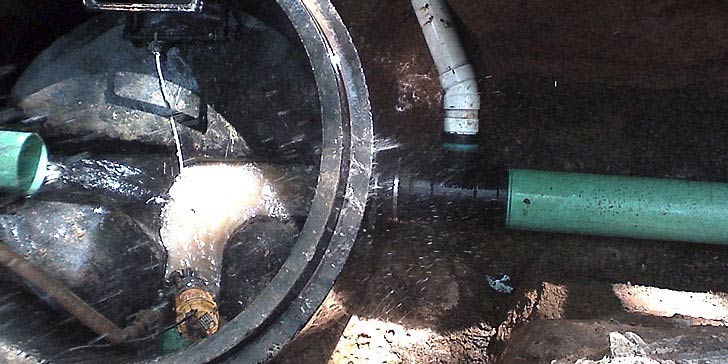We Offer Free Video Inspections!
ICUNJ has led the industry in implementing innovative solutions. No two
projects are the same, so our dedicated team of industry experts work
with you to develop customized solutions to meet the most
challenging conditions.
Root Intrusion - -Tree Roots In Sewer Lines Repair Service


Roots are a very common problem for sewer lines constructed prior to the early 1980's. This is because these sewer lines were built using VCT (vitreous clay tile) pipe. Clay tile pipe is a ceramic product dating back to the Roman aqueducts and is an ideal material for transporting water since it is inert. Clay tile pipe is also an ideal material for use in difficult environments since it is amazingly strong, having nearly a 3/4" thickness, and is virtually impervious to deterioration from normal use. However, its multiple joints are a downside. Clay tile pipe tends to leak water at the joints, making a wonderful water source for thirsty trees and shrubs.
In the late 1800's, clay tile pipe in 2-foot lengths were the pipe of choice by plumbers constructing new sewer lines. These 2-foot lengths continued to be used until about 1930 when they were replaced by 3-foot or 4-foot lengths. These longer lengths continued to be used into the early 1980's when they were replaced by PVC or SDR plastic pipe and superior joint sealing systems. In addition, use of Asbestos Containing Pipe (ACP) or transite Pipe became popular in the late 30's and continued until the USEPA prohibited its use in 1978 because of its carcinogenic properties.
When originally installed, plumbers "sealed" the numerous joints in the clay tile sewer line with materials such as concrete, coal tar, oakum, or rubber gaskets. Unfortunately, all these sealing materials deteriorate over time, allowing water to escape, beginning an underground "drip system" attracting tree roots. Once tree roots get between the joints, they continue to grow, spreading the joint. As the joint spreads, it leaks more water. If tree roots are allowed to grow large enough, they will eventually break the clay tile pipe. Inside the clay tile pipe joint, tree roots initially act as a filter, allowing water to pass through while straining out other products sent through the line. As soon as the roots have trapped enough material, all water flow is stopped, resulting in sewage backup. ICUNJ has the solution for root intrusion, and is the company you can trust to repair tree roots in your sewer line in NJ. Contact us today
Preventive measures list:
»Replace old pipes before problems occur
»Removing trees planted near pipes location
»Scheduling regular pipe inspections and cleaning
»Purchasing chemical solutions for your toilet
»Have pipe lines marked before planting new trees
»Avoid planting any trees with aggresive root spread
Common trees with invasive roots:
»Hybrid Poplars
»Willows
»American Elm
»Silver Maple
»Walnut
»Cotton Wood
»Aspen
Methods to Eliminate Defects in Sewers
Pipe Bursting: Cured In Place Pipe (CIPP) lining:
Open Cut Construction Spot Repairs High Pressure Jetting Snaking





